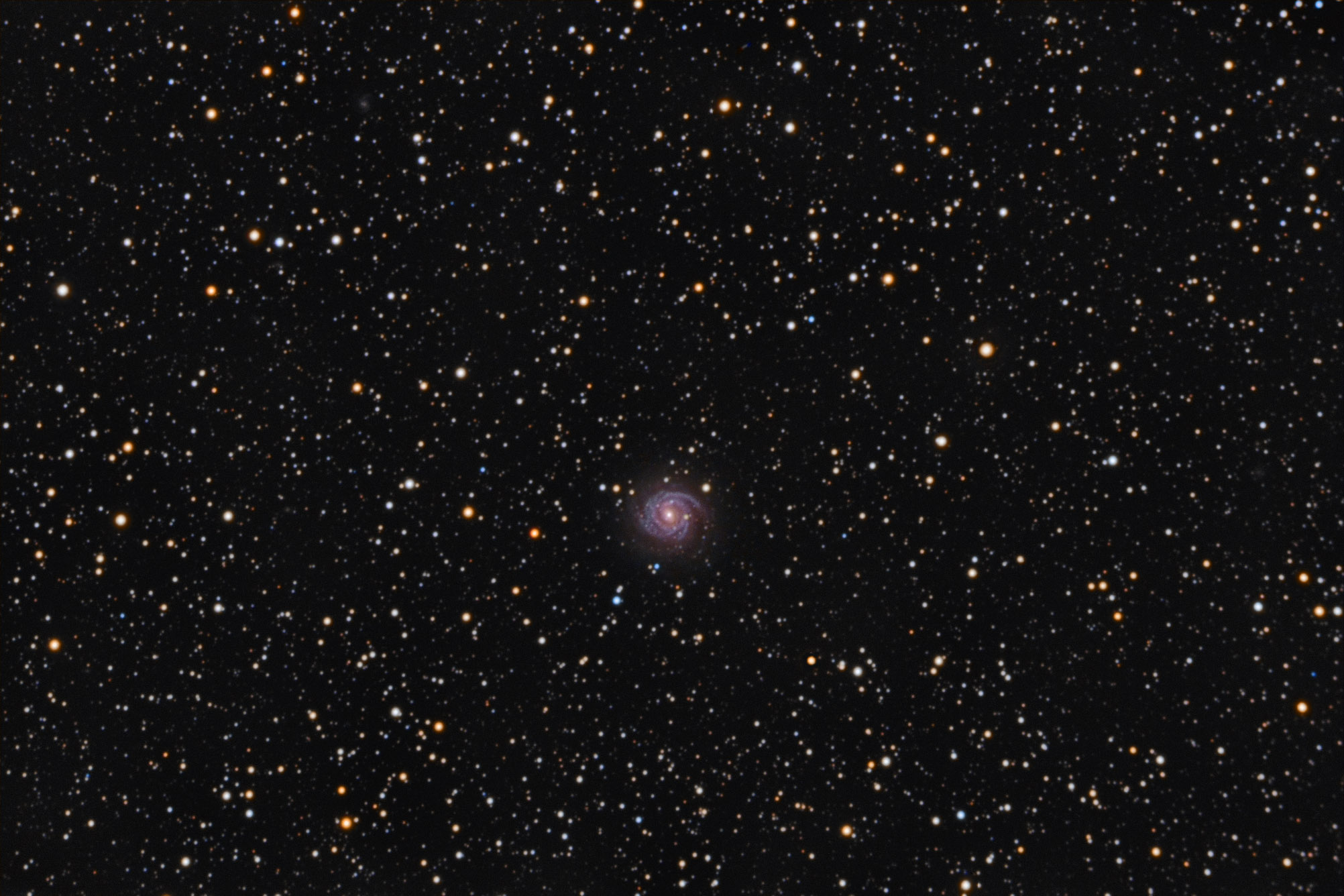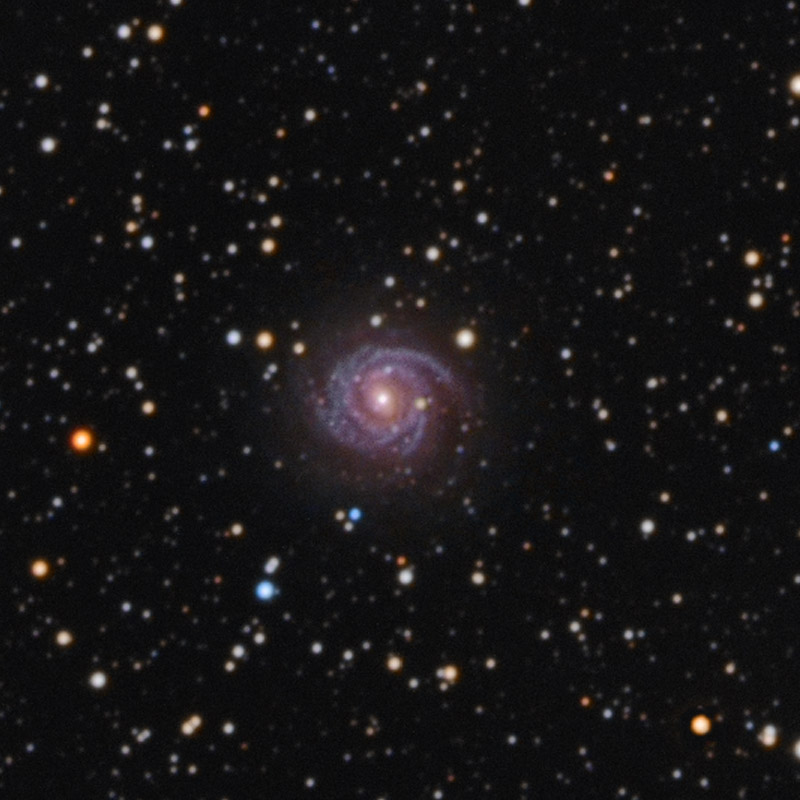| Description | Images |
Object name: NGC6814Designation(s): NGC6814, NGC 6814 is a face on spiral galaxy about 60 million light-years away in the southern Aquila. Not a constellation that jumps to mind when galaxies are mentioned. I no longer remember what caused me to put it on the to-do list. Possibly it is the somewhat extended northern arm pointing west then southwest. Or maybe that the arms are mostly segments giving some a split arm look Arp cataloged. NED classes it as SAB(rs)bc with HII emission and a Seyfert galaxy. Various sources disagree as to what class of Seyfert it is. NED says 1.2, notes say 1, 1.5 and 2. The NGC project on the other hand classes it as Sb+ I, I don't understand the I at all. Usually, that means "irregular" but I can't see it applying here. NED sees a bar but the NGC project doesn't. Who do you believe? I'm hard pressed to see a bar but many notes indicate it has a short wide one buried in the bright oval core. In any case, the many spiral arms don't seem related to the core at all. They seem to just start at random somewhere near the core then get bright as they move out beyond the end of the oval core region. Edit: It was discovered by William Herschel on August 2, 1788. It's in the second H400 program. I wasn't images this back in 2011 when this was taken so that's now why I imaged it. That's still a mystery. Related Designation(s):1RXP J194240.7-101928, 1RXS J194241.3-101928, 2FGL J1942.5-1024, 2MASX J19424057-1019255, 2PBC J1942.6-1019, 6dF J1942405-101925, 6dF J1942406-101925, AGC 590025, AKARI J1942402-101926, CGS 539, HIPASS J1942-10, IRAS 19399-1026, IRAS F19398-1026, LQAC 295-010 002, MCG -02-50-001, NGC 6814, NGC 6814:[KAC93] 000, NGC6814, NVSS J194240-101919, PGC 063545, SWIFT J1942.6-1024, SWIFT J1942.7-1018, XMMSL1 J194240.3-101919, [AHG2014] B218, [dML87] 714, [HDM2013] 4a, [KRL2007] 365, [MHH96] J194241-101955, [VCV2001] J194240.7-101924, [VCV2006] J194240.7-101923, [WMR2009] 129, |

